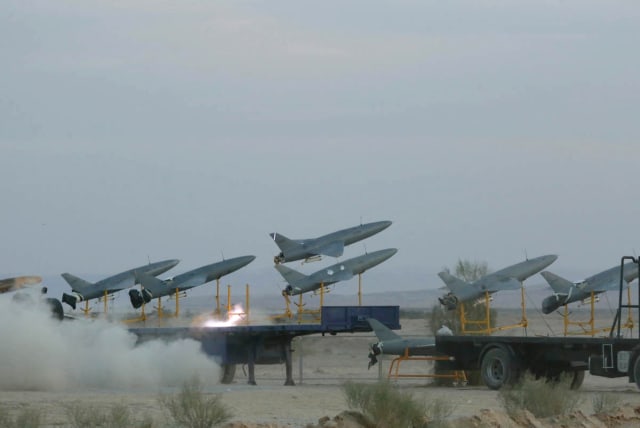5,000 UAVs could be fired at central Israel, and the IAF is not remotely prepared - analysis

As Israel approaches the end of an intense year that has compromised the IDF's ability to engage in a large-scale, multi-arena war of higher intensity.
The Israel Air Force (IAF) failed once again on Thursday night to protect the State of Israel. According to the IDF, this failure was due to human error. The findings indicate that while the UAV was detected, it was not classified as a threat, no alarm was raised and no attempt was made to intercept it. The IAF's response to Thursday's incident raises considerable doubts about the UAV’s size and launch location.
This is a serious event in many respects. However, what the public may not fully understand is that the axis of evil is waging a war of attrition against the State of Israel. This axis, led by Iran, includes Shia militias in Iraq and Syria, the Houthis in Yemen, and Hezbollah in Lebanon. They aim to erode the power of the IDF through drone attacks and missile barrages. Any damage to the Israeli home front is considered a victory for them.
It is important to recognize the looming threat of a major war. Experts estimate it could involve around 5,000 UAVs and missiles of various types targeting the Gush Dan region from different regions in the Middle East.
Realistic assessments of Israel's capabilities
For more than nine months, the IDF, and particularly the IAF, have been on high alert. We are approaching the end of an intense year that has compromised the IDF's ability to engage in a large-scale, multi-arena war of higher intensity.
There are significant gaps between the threats and the solutions. A simple question reveals this: For what threats has the IAF been built for in the last decade? The Russia-Ukraine war offers many insights and lessons that must be implemented quickly. Not all solutions come from procurement and new weapons developments. For example, in the past, Major General Tal Russo opposed the fence on the Egyptian border, saying, "Every shekel I have, I prefer to invest in offense rather than defense."
The next threat is already here: UAV drones of various types. The emerging threat of drone swarms, capable of mass attacks on large areas, poses a huge challenge to modern Western armies. So far, I have not heard that the IDF's multi-year plan, which has been delayed for a long time, places sufficient emphasis on these threats.
The IDF of 2024 will struggle to break old concepts and build new strategies. It is crucial to develop strength to face future threats and to move past outdated ones.
This is one reason why I believe the war in the Gaza Strip should continue until the power of Hamas is eroded.
The fighting should create a new security reality, focused on returning the hostages and preventing the need to divide our forces across multiple fronts. Concentrating our efforts in one area will allow us to strike more powerfully.
Jerusalem Post Store
`; document.getElementById("linkPremium").innerHTML = cont; var divWithLink = document.getElementById("premium-link"); if (divWithLink !== null && divWithLink !== 'undefined') { divWithLink.style.border = "solid 1px #cb0f3e"; divWithLink.style.textAlign = "center"; divWithLink.style.marginBottom = "15px"; divWithLink.style.marginTop = "15px"; divWithLink.style.width = "100%"; divWithLink.style.backgroundColor = "#122952"; divWithLink.style.color = "#ffffff"; divWithLink.style.lineHeight = "1.5"; } } (function (v, i) { });

